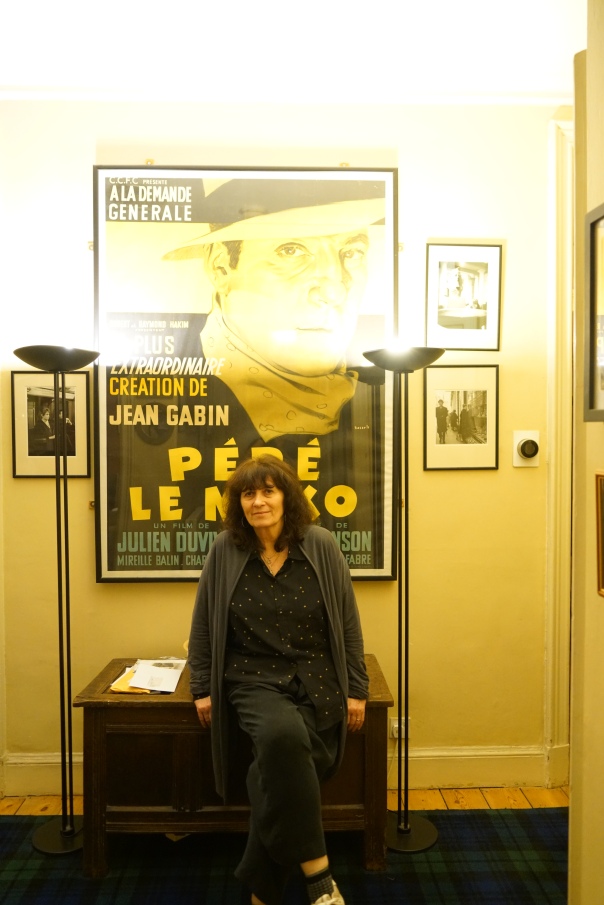
When I was growing up, everything I heard or read about THE BOYS IN THE BAND was terrible. Recently, after the Broadway revival, it was meant to be ´period´and wonderful. I´d never seen the film until now and found it a difficult and unpleasant watch, an experience I’ve written about here. When I had the opportunity to talk to Gary Needham about CRUISING, I also took the opportunity to ask him about THE BOYS IN THE BAND. Gary’s work on queer cultures is by now extensive and wide-ranging:
His is the voice of reason; thoughtful and considered on the initial reception of the film, its relation to the play and its subsequent afterlife. I come across as quite brattish. It makes for a lively conversation, one that references a range of films, from Pillow Talk (Michael Gordon, 1959) to My Hustler (Andy Warhol/Chuck Wein, 1965) to The Queen (Frank Simon, 1968) to Philadelphia (Jonathan Demme, 1993). We discuss the film’s uses of camp, Friedkin’s interest in sub-cultures, the stageyness or not of the mise-en-scène, the possible classist dimension of the film, and Tom Waugh’s argument on the duality of sound and image in My Hustler in relation to the hustler and the queen with the hustler afforded the image and the queen given power over the sound. The discussion can be listened to here:
If you’re interested in further exploring The Boys in the Band, I highly recommend Matt Bell’s The Boys in the Band: Flashpoints of Cinema, History, and Queer Politics as a wonderful addition to Gary’s insights and as a possible corrective to my contributions:

Matt Bell has also written a very interesting piece on the 2018 Broadway revival (and its various contexts) for The Huffington Post called ‘Taking Pride in The Boys in the Band‘ that can be accessed here.
As with the podcast on Cruising, Gary has kindly made available a range of resources:
An entire issue of After Dark, featuring an interview with Leonard Frey where the actor discusses the filming of Boys in the Band, and the strong possibility that it might result in a better film than play: After Dark (Boys in the Band)

An interview with Mart Crowley on the 25th anniversary of the play’s premiere: An_emotional_state_Mart_Crowle
An interview with Mart Crowley that discusses various productions in the context of the recent revival of the play on Broadway: And_the_Band_plays_on
A discussion from 1973 on reasons to see the touring production in San Diego: Boys_still_good_theatre
An appraisal of the film’s DVD release by Peter Burton: Playing_up…
An image of the New York Cast Album, which featured dialogue from the play: 
A 1969 review of the LA touring production praising ‘the authenticity of the dialogue’: Reflections_on_’Boys’
A 1979 interview with Robert La Tourneaux for Gay News: Robert_la_tourneaux
An ad for the San Francisco production with an invitation to the cast paty: YEQWMD727018207
Various reviews and ads for other touring productions:
Images from the film (and the play — you can see Natalie Wood in the centre below):
…and perhaps the greatest find is this episode of Emerald City, where the great Arthur Bell — whose columns in The Village Voice in the early 80s were so important to me personally — interviews Robert La Tourneaux on the 10th anniversary of the release of the film. Bell talks about how he didn’t like the film then or now but how he still acknowledged the ‘piercing moments of truth’. La Tourneaux is frank about hustling and equally frank about how appearing in the film affected his career giving concrete examples of how his mere appearance in the film was reason for people like Bob Evans to not even see him for roles much less interview or audition, and this from the horse’s mouth. A fascinating show, with the ads in between the interview being at least as fascinating as the interview itself. It can be seen here:
José Arroyo
Like this:
Like Loading...




































































































